How to Remove and Replace a Toilet Seat- With Pictures
Last Updated on July 27, 2023 by toilethaven
Toilet seat replacement is one of the most common bathroom repairs involving the toilet. A toilet seat is either made of plastic or wood and hence susceptible to breakage.
The up-and-down movement of a toilet seat is responsible for most toilet seat breakages, especially when the seat slams hard on the bowl. A toilet seat that is shifting or not properly tightened well is likely to break.
Fortunately, replacing a toilet seat is a simple task that takes only 10 to 15 minutes. You will only need a screwdriver, but sometimes a hack saw blade will be needed, especially when the seat mounting bolts are old and corroded.
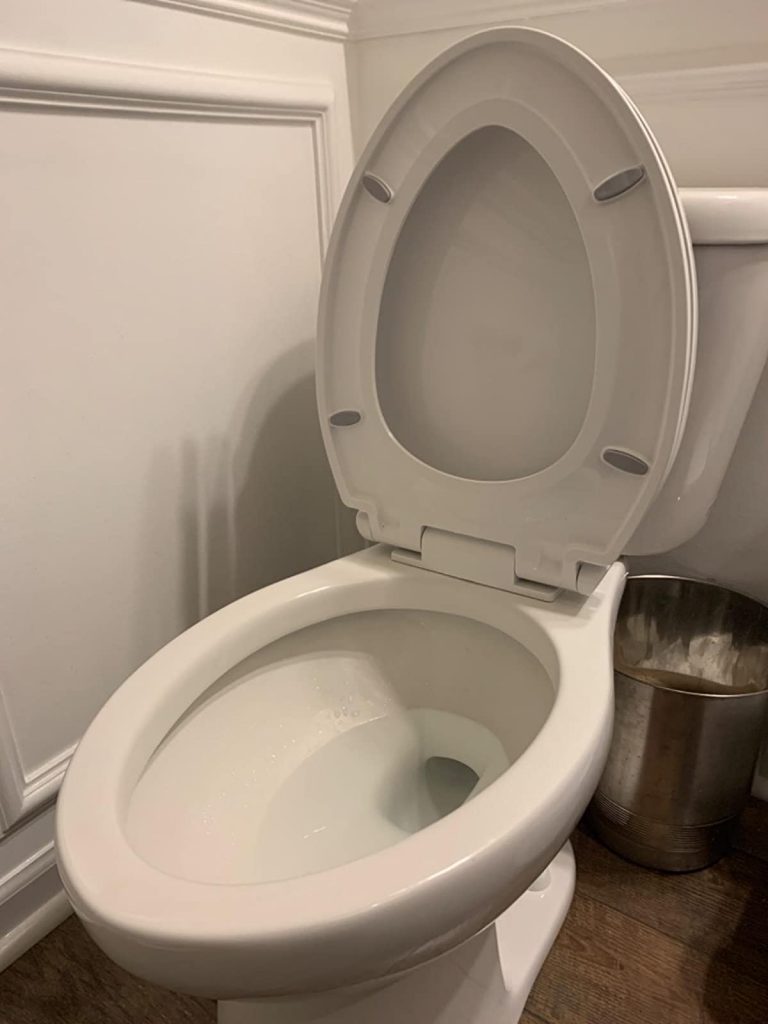
To replace a toilet seat, remove the old seat by loosening the mounting bolts using a screwdriver while holding the wingnut underneath with your hand. Clean the bowl and install the new seat making sure you keep it aligned to the bowl by tightening the bolts alternatingly and gently to prevent cracking the bowl.
Before buying a replacement toilet seat, make sure that you measure your old toilet seat. Toilet seats are either round or elongated, and although you can easily tell them apart, always measure if you are unsure.
To replace a toilet seat with hidden bolts, pry off the tabs covering the bolts using a flathead screwdriver or knife to reveal the bolt heads. Use a screwdriver to loosen the bolts while holding the wingnut under the bowl with your other hand.
In summary, replacing a toilet seat involves the following 4 easy steps:
- Remove the old toilet seat.
- Measure for the new seat.
- Buy a replacement seat.
- Install the new toilet seat.
Items Needed to Replace a Toilet Seat
- Flathead screwdriver
- Measuring tape
- Rubber gloves
- Pliers
- new seat
To replace a toilet seat, you must first know the type of toilet seat you already have and the toilet seat you want to replace it with. Here are the different types of toilet seats:
- Soft close toilet seats – Soft close or slow close toilet seats are toilet seats that close slowly, as their name suggests, to prevent them from slamming on the bowl. Check out the best soft-close toilet seats here.
- Plastic toilet seats vs. wooden toilet seats – To read more on the pros and cons of plastic vs. wooden toilet seats, check out this post.
- Quick-release toilet seats and non-quick-release toilet seats – Toilet seats with a quick-release mechanism make it easy and quick for you to remove and install them back during cleaning. Check out the best toilet seats here.
- Top-fixing toilet seats and bottom-fixing toilet seats – Top-fixing/mounting toilet seats are those you can comfortably mount from the top of the bowl without bending over the bowl to tighten a nut. Bottom-fixing toilet seats are the opposite.
- Bidet toilet seats – Bidet toilet seats use water to clean you after using the toilet instead of toilet paper. Check out some of the best bidet toilet seats here.
Step 1: How to Measure a Toilet Seat
There are three ways to measure a toilet seat. These are:
- The toilet length
- The toilet width
- The bolt spread
Toilet seat dimensions are critical when buying toilet seats for a replacement. Modern toilet dimensions are quite standardized, and it should be easy to buy an appropriate toilet seat replacement.
Toilets and toilet seats come mostly in two shapes, the standard round toilet seat and the standard oval or elongated toilet seat. Elongated toilets and toilet seats offer more comfort to the user than round toilets and toilet seats. Round toilets and toilet seats are, on the other hand, more space-efficient.
The 3 methods below will guide you on how to measure for a toilet seat by measuring the toilet bowl size
1. Measure the toilet bowl length
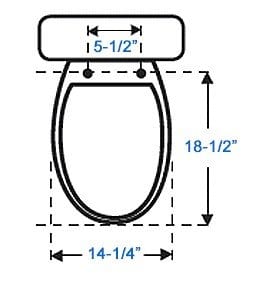
If the toilet seat is already off, Take your tape measure and measure the length of the toilet bowl from the center of the two bolt holes to the front of the bowl. Write the measurements down. If the size is roughly 16-17 inches, order a standard round toilet seat. On the other hand, if the size is around 18-19 inches, proceed to order a standard elongated toilet seat
2. Measure the bolt spread
Take your measuring tape and measure the distance between the two bolt holes at the back of the toilet bowl. In the United States, the standard size is 5.5 inches, while in Europe, it is between 6 and 6.5 inches.
3. Measure the toilet bowl width
Just assume that your toilet bowl is a clock with the front being noon, and measure the distance from the 3 to 9 o’clock points. Write this measurement down. The width of standard round and elongated toilet bowls is roughly 14 inches.
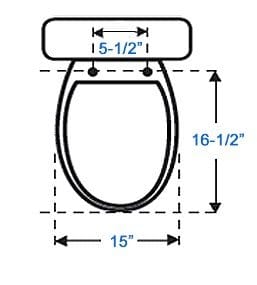
Step 2: Make your Toilet Seat Purchase
Different factors will influence the choice of the toilet seat you want to buy. You will need to consider your budget, style, material, and preferred toilet seat color, among other factors.
If you are buying for use in a public washroom, ensure the toilet seat has a gap at the front. This is a legal requirement.
Step 3: How to Remove a Toilet Seat
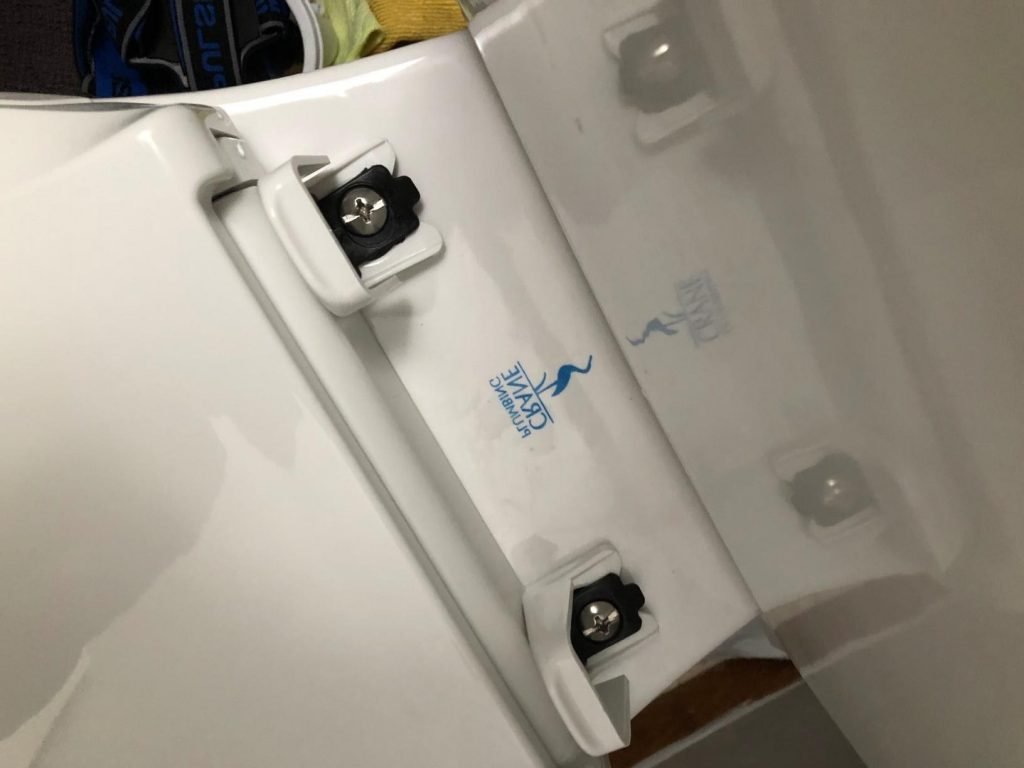
Modern toilet seats are attached to the toilet bowl by two plastic bolts and nuts. Some have polished chrome mountings. This is how to remove the toilet seat:
- Behind the toilet seat hinges, look for protective caps that cover the toilet seat bolts. Use your screwdriver to remove them, being gentle not to damage the toilet bowl. You can also pry them off with your bare hand.
- Put your hand underneath the toilet bowl to feel the end of the bolt. You will also find the plastic nut there.
- Hold the nut with your left hand (if you’re right-handed) and engage the head of the bolt with your screwdriver.
- Holding the nut tight, turn the screwdriver counterclockwise to remove the bolt. Do the same for the other bolt.
- Use a pair of pliers or an adjustable wrench if the nut is too tight for your hand.
- Your toilet seat is now free, and you can lift it off.
How to replace a toilet seat that has been attached with metallic bolts is a bit different. There is always the possibility that the toilet seat has been in place for a long time and the bolts are corroded and won’t just loosen.
- Spray penetrating oil on the bolts and nuts and leave it for about 15 minutes.
- Now use an adjustable wrench and screwdriver to try and remove the bolts again.
- If this doesn’t work, use a mini hacksaw and cut the bolt just above the nut, being careful not to cut the bowl.
Step 4: How to Install a Toilet Seat
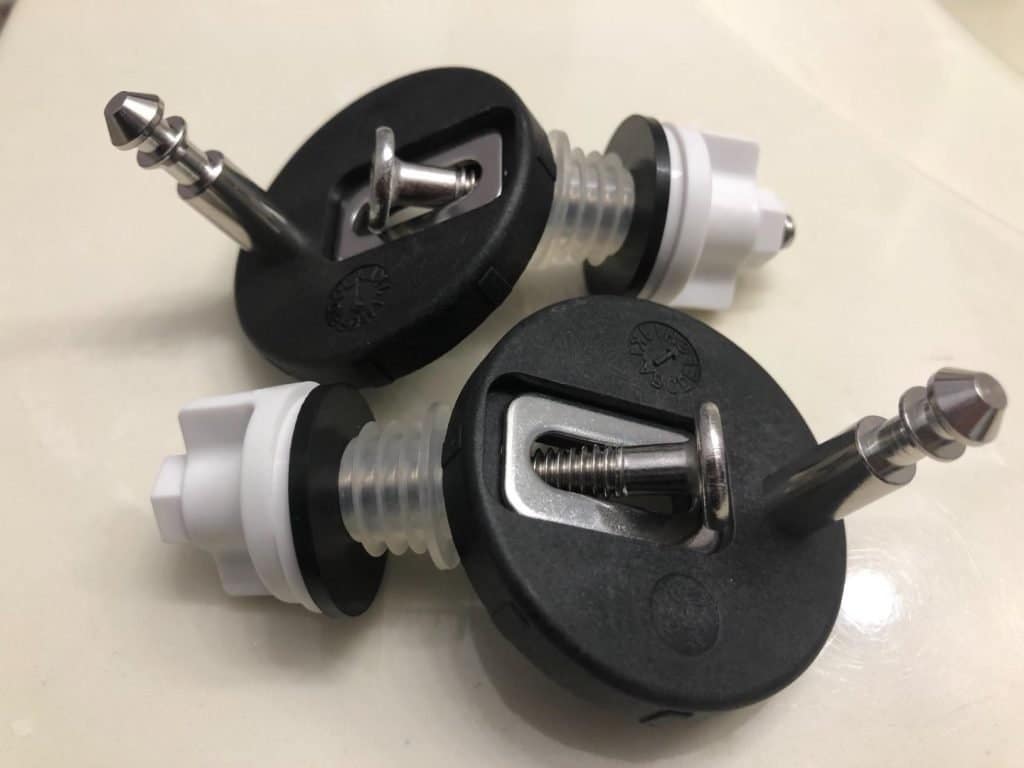
Installing a new toilet seat is, in essence, the reverse of removing the old toilet seat. Now proceed as follows:
- Slot the bolts on the toilet seat, fixing holes.
- Set the toilet seat. Ensure the toilet seat sits pretty on the rim of the toilet bowl. The bolts will go through and protrude underneath the two holes in the toilet bowl.
- From the protruding bolts underneath, feed your nuts and washers on both bolts and tighten alternatingly. This is how to tighten toilet seats. Otherwise, the toilet seat will be offset.
- If your new toilet seat package has the plastic caps snap, put them on the heads of the bolts.
- The plastic caps prevent the toilet seat from rocking and enhance the overall seat design.
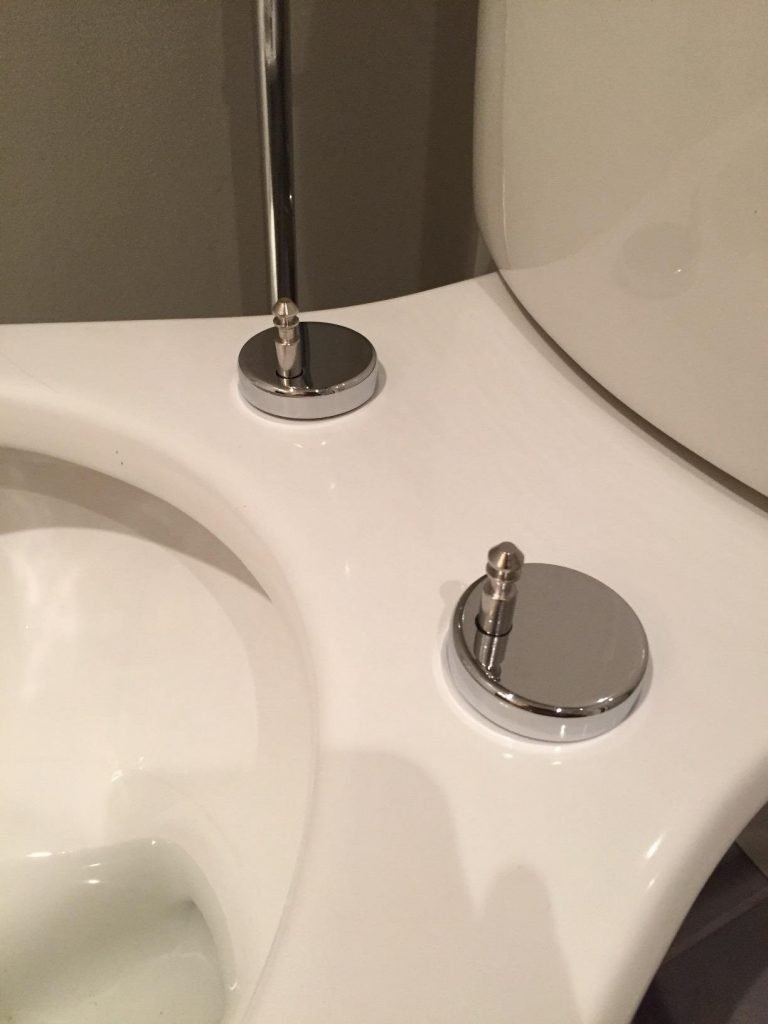
- For quick-release toilet seats, though, the design is different. The toilet seats do not have bolt holes. Instead, you just slot the 2 bolts/poles through the toilet bowl holes and tighten them in place. The toilet seat hinges have a slot which, through some button push, you slide over the bolts to secure the seat.
And that’s how to replace a toilet seat.
Conclusion
Toilet seats are an important part of the toilet. Knowing how to replace a toilet seat goes a long way. Toilet seat manufacturers are always improving the functionality of toilet seats. That means different mountings of toilet seats too.
Despite these changes, toilet seat replacement methods do not change much. If you can replace one toilet seat design, then you can replace all the toilet seat designs.
FAQs
1. How much does it cost to replace a toilet seat?
You can get a cheap toilet seat for as little as $20, but there are more expensive ones. If you replace the toilet seat yourself, you will save the amount you would have used if you called in a plumber. This is why knowing how to replace a toilet seat is important.
2. How long does it take to replace a toilet seat?
Replacing a toilet seat is a very easy DIY and should take around 15 minutes.
3. Do all toilet seats fit the same?
No. For instance, a standard round toilet seat wouldn’t fit on an elongated toilet bowl and vice versa. However, most elongated toilet seats will fit in most elongated toilet bowls. The same is also true for round toilet seats.
4. How do you replace toilet seats with hidden bolts?
Just behind the toilet seat hinges is where the bolts are hidden by plastic caps. Use a flathead screwdriver to lift off these caps and reveal the head of the toilet seat bolts. With the screwdriver engaged to the toilet seat bolt’s head, reach for the nuts underneath the toilet bowl and untighten.
5. How do you tighten a toilet seat?
Use a flathead screwdriver to engage the head of the toilet seat bolt, then tighten the wingnuts underneath the toilet bowl with your hand. The nuts and bolts are mostly plastic, and you don’t want to go wild on them with a wrench as they will snap. If the bolt and nut are metallic, you can use a twist to tighten while being careful not to crack the bowl.
6. How do I remove rusted toilet seat bolts that won’t just come off?
The first step is to use penetrating oil. Spray a penetrating oil like WD-40 on the bolt and nut and give it about 10 to 15 minutes to work its magic out. Now use a deep-well socket to remove the nut.
Unlike a normal adjustable wrench, the deep well is able to go through the long, penetrating end of the bolt. If the entire bolt starts to rotate, you can have someone back off the head of the bolt while your turn the nut in the other direction.
If the above method does not succeed, use a drill with a ¼ inch bit. Engage where the nut and bolts meet, and drill parallel to the bolt. Repeat the process above with a deep-well socket. If unsuccessful, keep enlarging the hole until the nut and bolt both come out.
7. Why do public toilet seats have a gap?
Public toilet seats are made with a gap at the front primarily for the convenience of lady users. With such a design, women are able to reach back and wipe/clean their perineal area.
8. Should I leave the toilet seat up or down?
When men use the toilet, they need the toilet seat up. Otherwise, they might drop some pee on the seat. Most, if not all, men pee while standing. If a man finds the seat down, he should lift it, use the toilet, and then put the seat down.
When women are using the toilet, they need the toilet seat down. And if they found it up, they would need to touch it to bring it down, something most, if not all, women hate.
In my opinion, the best thing to do is to leave the seat down, ready for the next toilet user.